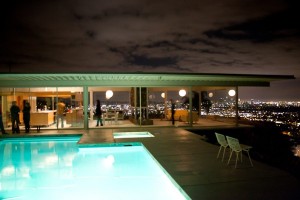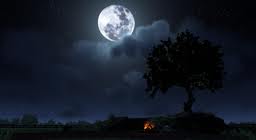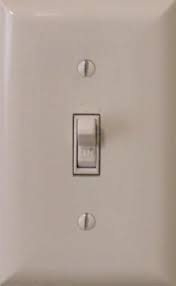Detail vs. Diurnal
by Godzprototype, HSM team writer
The question of whether to make a space detailed, or to give the user lighting control, is something developers think about. Especially when the final product is something the user will enjoy well beyond its release date if it is done right.
I miss the days when Sony made spaces. Of course they had huge teams of highly skilled artists, whose understanding of what people liked most in a space came from years of experience. Thanks to them, Home has some really amazing and highly detailed spaces.
Today, third party developers have to ask themselves if the end user would rather have realistic detail in a static scene, or give them the ability to change the lighting to suit their imagination. This comes down to a matter of time for them. To do lighting and have a very detailed space may not be profitable for them, given the time it takes to do such work, if it’s even possible to begin with. We all know that spaces have memory constraints. There is only so much you can pack into them.
I know we all love the ability to make it night. But you can also to have a space dedicated to nighttime, like Lockwood’s Midnight Glade, which still includes all the detail you could ever imagine and is a work of art all in itself. A perpetual work of art, truly sublime — it’s something people can and will enjoy as long as it is there.
Creating these spaces takes time. Lots of it! I speak from a very small experimental experience, in that I have tried very hard to make lighting different in the films I have made. I usually just add flare effects to certain scenes.
Sony’s Nebula Airship is another favorite of mine. It’s a daylight Monet painting. A lesser known space that really pumps the lighting on your avatar is the Tron apartment. This space bathes your avatar in the best lighting we had seen in any space in Home, until LOOT gave us the white room in the “Dr Who” TARDIS space.
Enter the diurnal control. Power to the user! A direct result of user requests, this is a control that allows a user to change the lighting from day to afternoon to night. I believe this adds a slight cost to the time spent on detail. Something I have really wanted to point out since we were given this ability is to encourage developers to not forget how important those details really are.
Before we had the ability to change lighting, a space was created with specific graphics for the apparent time of day, lighting sources, and depth of field. So your discovery of detail was a part of what you were buying. Now, it would seem that giving the user a control to make it night or day is a bit of an afterthought. It appears that the space is made, and the control is tacked on.
Granzella seems to make diurnal controls work very well in their spaces. The Tea Garden has really seen some very nice changes with this control, and I can imagine Granzella took the time to really look at how those lights would affect things in the space.
Recently I had the pleasure of attending a LOOT Entertainment live broadcast on UStream for announcements of things to come, and they were very welcoming to questions based on those announcements. When the Hollywood Hills House night version came into the discussion, of course I was intrigued. This is a new direction that I wonder if other developers might consider. Remaking places people love, in a time they would like to see, with all the detail the space deserves.
 I asked LOOT if it was hard to recreate the space with the lighting. The answer was… YES! They said it has been very difficult to do this satisfactorily. As a consumer, I have to say I appreciate the effort they spent in taking the time to do it right. Recreating Hollywood Hills House at night is going to be cool. I will definitely be buying this — a space I have had a ton of fun in with a lot of people, now with a whole new set of lighting effects. And knowing that LOOT cared about having a different setting that worked right, and looked right, matters to me.
I asked LOOT if it was hard to recreate the space with the lighting. The answer was… YES! They said it has been very difficult to do this satisfactorily. As a consumer, I have to say I appreciate the effort they spent in taking the time to do it right. Recreating Hollywood Hills House at night is going to be cool. I will definitely be buying this — a space I have had a ton of fun in with a lot of people, now with a whole new set of lighting effects. And knowing that LOOT cared about having a different setting that worked right, and looked right, matters to me.
Lighting in Home is simulated lighting. I don’t think lighting in Home is dynamic by design. That makes doing it right very hard with the tools available. The developers have to recreate the whole scene for light from a specific direction. Doing that effectively is very hard.
For me, diurnal controls are a nice idea, and as long as the developer takes the time to see how that looks in each phase we all will enjoy having that control. To those developers that are looking at remaking a space to give it a different setting, this will be most desirable, as it will no doubt add more detail to what was already there. I for one am really looking forward to this.
Detail is where the wonder is. Discovery of that detail and knowing how important it was for those artists to display it to us is one of the biggest reasons I wander around Home. So detail wins the battle over diurnal for me, at any rate.
I would like to see other developers follow LOOT’s lead of this — recreate a popular space with a different setting. Change the setting in ways that will add to the space’s ambiance. I bet people will appreciate it more, knowing the time and effort spent on it.
Share
| Tweet |





 Twitter
Twitter
I remember my first virtual sunset. It was when Zelda, Ocarina of Time had hit the shelves, and man was I blown away. I actually stopped playing to just stand there and watch it pass, imagine my amazement when I realized that at night, all the nasties come out! Heh, then later I discovered that I had CONTROL of the day and night by playing songs on my pad/Ocarina!!!
Since then, such powers in games and options in virtual worlds just dont have the same impact, but hey, that’s typically true of most things in life; the first time is usually the best time.
I’m glad LOOT have taken the time to give us this option, and I understand why they made it a *new* space, but to me, it kinda misses the point really. Since those days of Zelda (and thanks to most other sandbox games) I have this constant thing over me in static virtual worlds that keeps saying “this isnt real” after I’ve visited for the umpteenth time and the same cloud is in the same place, and the sun/moon haven’t moved since I was last there.
For me, the ultimate thing for lighting in Home would be akin to the Animal Crossing games, whereby the time of day is set by the system clock of the user. Not only does this bring ambience and fluidity to the environment, but it ties it into YOUR real world, blurring the lines of being inside the machine, and outside in reality.
Now, if only they could match the weather…
There probably would be some way to match weather if the user has specified a location. Not sure it would be worth it, though. And since most of my online time is in the middle of the night, my synched apartments would never see daylight.
The challenge is that a Home scene has a finite amount of memory to work with; I was shooting the Hollywood Hills nighttime scene at the office today, and the depth of the lighting is astonishing. It really does feel like a proper nighttime scene.
All of that lighting would be scrapped in order to find enough memory to implement diurnal controls. So you’d have the day/night cycle, but the lighting wouldn’t look right. And that could potentially break the illusion.
In an ideal situation, there’s enough memory to go around for everything — diurnal controls, weather controls, lighting, et cetera. The challenge is when there *isn’t* enough memory, and you have to pick and choose what you think the consumer base will find most appealing, along with what’s inherently best for the scene itself.
Generally speaking, I’m a fan of being able to customize and interact with as many elements of a setting as possible. That said, there’s a strong case that can be made for making the setting itself as visually immersive as possible, even at the expense of more overt whizbang features. And, to be fair, Hollywood Hills (daytime and nighttime) have been upgraded with new functionality as well: there’s the new swimming feature — which looks *amazing* — and for SCEA consumers, there’s the built-in RadioIO panel that plays music throughout the entire space. These are user-requested features which made it into the finished product, and they really do add a ton of value to the experience.